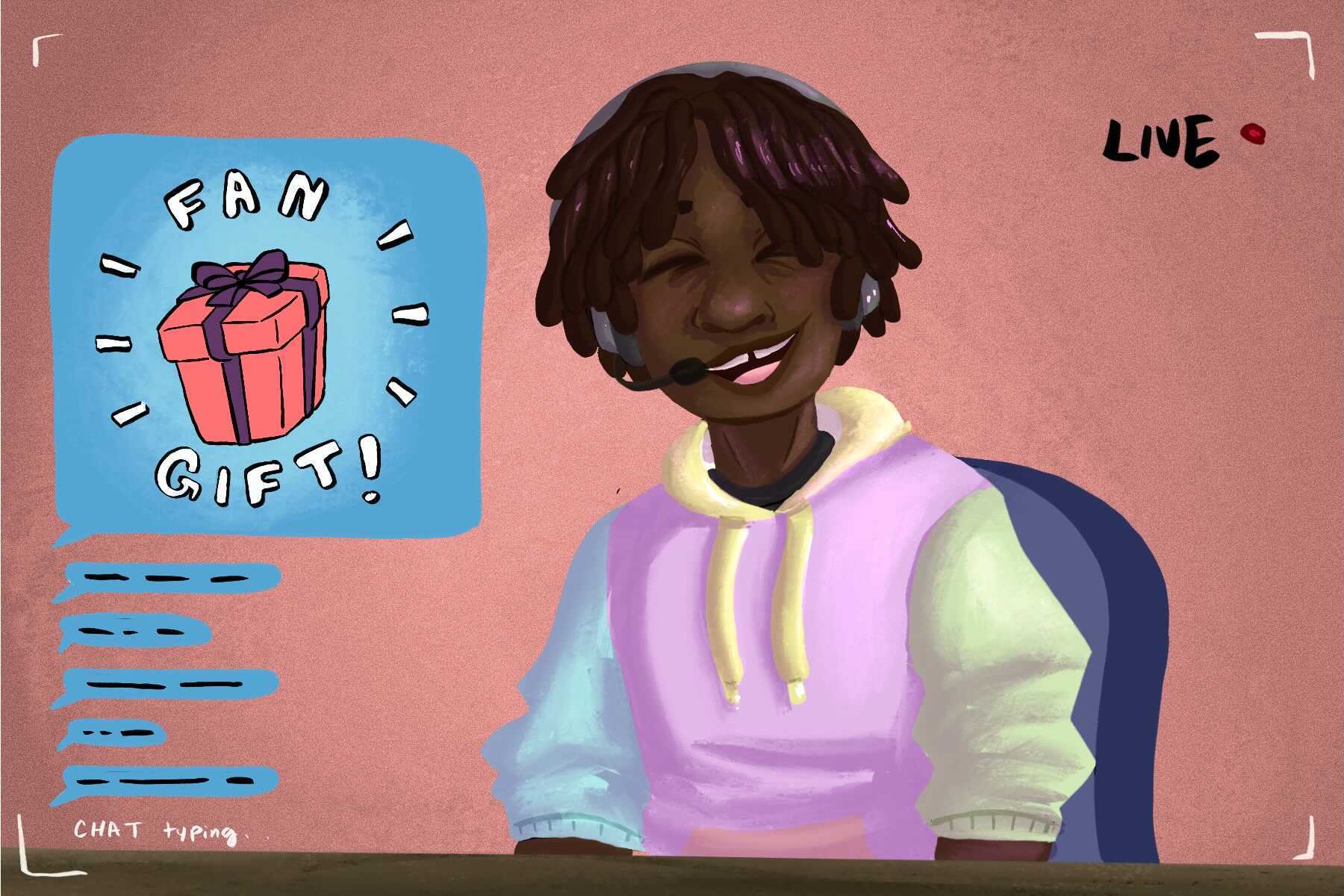In recent years, livestreaming has grown into one of the most prominent forms of internet entertainment. The ability for audiences to interact with live performers distinguishes it from other forms of media. Livestreaming platforms like Twitch encourage interactivity through features such as live chat, custom polls and donations. Although stream interactivity is often limited to these simple forms of communication, some streamers have devised creative ways to involve the audience in their performances. These experimental projects lead to entertaining and original productions, demonstrating the untapped potential of interactive livestreams.
Direct Control in “Twitch Plays Pokémon”
“Twitch Plays Pokémon” is one of the earliest examples of a livestream designed around interactivity. The stream tasked its audience to complete the 1996 Gameboy title Pokémon Red by controlling the player character through commands inputted into the chat. This required viewers to work together to traverse the game’s vast world and strategize in tactical turn-based battles. The stream began on February 12, 2014, with this simple premise and aired for 16 consecutive days.
Simultaneously placing thousands of audience members in control of the game inevitably led to problems for the stream. The constant barrage of commands and lack of unity made precise movements nearly impossible, making difficult obstacles out of simple tasks like moving forward or naming newly caught Pokémon. While some viewers wanted to move left others tried moving right, negating their progress and halting the stream for hours at a time. This issue worsened as they reached more challenging areas until their lack of cooperation trapped them in one section for nearly six hours.
As a result, the stream’s creator quickly implemented a new “democracy mode” feature, which made all inputs count toward a vote for the character’s next move. Although this slowed the stream, it enabled viewers to make precise decisions rather than constantly counteracting each other. Eventually, the creator changed “democracy mode” into a toggleable option, allowing the audience to control the stream’s pacing at will.
Another consequence of the interactive format was the malicious viewers who united to derail the livestream’s progress. This involved sending the player character to the start of large areas at inopportune moments, undoing hours of progress, or permanently removing beloved or important Pokémon. However, these groups made up a small minority of the audience, as most viewers had begun working together through various message boards and the stream’s chat. Despite the numerous troubles that plagued the stream, the audience completed Pokémon Red on March 1, 2014, signifying the end of the historical stream.
“Twitch Plays Pokémon” left a monumental impact on Twitch and the livestreaming industry. The stream attracted 80,000 viewers to the Twitch website and earned a Guinness World Record. Its combination of impressive coordination between online strangers and the occasional chaotic unraveling of their hours of progress formed an entertainingly unpredictable show for both active and passive viewers. Most importantly, it demonstrated the creative potential of interactive livestreaming with an experience that can’t be replicated in other media.
Realm Pictures and Streamlined Interactivity
Although unregulated freedom benefits the chaotic style of “Twitch Plays Pokémon,” its format would not work for a carefully designed stream that requires live actors and complex sets. Realm Pictures’ “Real Life First Person Shooter” series resolves the issues of its predecessor by adopting a different approach to interactivity. The studio connects to random individuals over one-on-one chat sites such as Chatroulette and Omegle for these streams.
The unsuspecting viewers must verbally guide an unnamed soldier through a zombie-infested graveyard or abandoned space station. The soldier can also respond to the viewer to deliver helpful observations or criticize questionable instructions.
Realm Pictures designs its streams to bring aspects of film and video games into an interactive format. Despite being filmed from a first-person perspective, the camerawork excellently showcases the well-crafted sets and highlights the dangers for viewers to react against. The second “Real Life First Person Shooter” stream further deepens the players’ involvement in the action by having them visit a fictional website to solve a puzzle and placing them in direct control of a turret near the conclusion. Even with the linear nature of these streams, they successfully entertain the viewer from start to finish.
One year after the “Real Life First Person Shooter” streams aired, Realm Pictures improved the format with “Real Life Hitman,” a collaborative project made alongside IO Interactive, the Hitman video game series developers. The stream assigned viewers the simple goal of guiding a contract killer into a mansion to assassinate a wealthy target.
Despite its simple premise, “Real Life Hitman” represents an impressive evolution of Realm Pictures’ formula. The mansion delivers an open-ended environment with multiple pathways for the viewer to choose from. Its greater focus on choice also applies to the action, as viewers possess far more options when instructing the hitman. He can dress in multiple disguises, start fires as a distraction, or sneak poison into food and drinks. “Real Life Hitman” is easily Realm Pictures’ best work. It continues the studio’s reputation for quality interactive productions while providing more freedom to the viewer.
It’s worth noting Realm Pictures’ attempts at reinventing livestream interactivity are far from perfect. The smaller audience prevents the troubles that often plagued “Twitch Play Pokémon” but consequently removed larger audiences’ amusing unpredictability. The limited accessibility of these streams also prevents them from gaining more attention for their work.
The stream highlights on their YouTube channel are entertaining but fail to fully capture the appeal of watching a live performance. Despite their faults, Realm Pictures advanced the concept of an interactive livestream, setting the stage for someone else to combine the studio’s streamlined quality with the anarchic freedom of “Twitch Plays Pokémon.”
The Controlled Chaos of Jerma985
Some of the best examples of livestream interactivity come from the mind of Twitch streamer Jerma985. Although he is mainly known for gaming content, he has gained a reputation for producing unusual yet excellent high-budget streams. These larger streams often differ in premise, ranging from an educational archaeology stream to a talent show where viewers vote for one contestant to replace Jerma. Some of these dabble with interactive features, but his two largest streams exhibit technological innovation and quality that future interactive livestreams should follow.
On Sept. 21, 2019, Jerma broadcasted “The Carnival Stream,” a nearly five-hour event where viewers played various carnival-style games through chat commands. Though not as elaborately crafted as Realm Pictures’ work or as open-ended as “Twitch Plays Pokémon,” the carnival stream captures the entertaining qualities of both styles.
Jerma constantly interacts with the audience with his witty sense of humor and challenges them to use the stream’s limited interactivity in creative ways. This created multiple unexpected moments, such as the viewers launching a toy frog at Jerma’s face on their first attempt. Furthermore, the stream maintains a consistently enjoyable pace by never lingering too long on any segment. With this balance of creativity and freedom, the carnival stream revives the community aspect of interactive streaming without its prior faults.
Jerma revisited the concept of an interactive stream in 2021 with his largest event, “The Jerma985 Dollhouse.” The dollhouse event consisted of three streams in which viewers decided Jerma’s actions across various situations (much like the famous Sims franchise). Along with determining his daily routines or what he will say in conversations, viewers could customize his outfit and purchase furniture to place inside (or outside) the dollhouse. The impressive freedom granted to viewers created numerous comedic moments, such as the audience blockading the front door with a bed, forcing Jerma to exit the house through the window.
One of the most impressive accomplishments of the dollhouse streams was their constant improvement as they progressed. Each subsequent stream expanded the size and scope of the dollhouse by adding more rooms, new characters and a wide range of increasingly absurd scenarios.
Many of the dollhouse’s stories begin as simple but entertaining situations, such as Jerma baking a cake or confronting a bear. However, the audience’s decisions can drastically alter the conclusion and consequences of each plotline. This can lead to significant effects such as character deaths and even a dramatic love affair in the final stream. Because all three dollhouse streams build one ongoing story, the impact of a single choice might not be apparent until a later stream. This gives a sense of meaning to every viewer’s decision, engaging them with a shockingly well-crafted mixture of comedy and drama.
It’s difficult to imagine another livestream surpassing the ambition and surprising success of “The Jerma985 Dollhouse.” These streams matched the unrestricted freedom of “Twitch Plays Pokémon” along with the quality production of Realm Pictures’ work. By the end of the final dollhouse stream, audiences had witnessed an entirely improvised stage play with a plot they shaped. Jerma and the team behind the dollhouse streams delivered a show that would be impossible in any other format but ended up as an excellent and memorable example of interactive streaming.
An Uncertain Future for Interactive Livestreams
Jerma’s event streams were only possible due to his ability to pay for their immense costs. He stated the carnival stream cost $40,000 to produce. Funding the “Jerma985 Dollhouse” was even more expensive, requiring him to secure a sponsorship with Coinbase. He recently signed a partnership deal with the Evolved talent agency to continue creating large-scale streams. Any similar attempts at interactive streaming are guaranteed to be costly projects, and the technically complex nature of livestreams allows plenty of opportunities for problems to arise. As a result, other creators will unlikely even attempt to experiment with an interactive livestream of this scale.
Interactive livestreaming is a promising field with plenty of room for growth and improvement. While it initially started with a significant focus on gaming in “Twitch Plays Pokémon,” each of its successors shifted toward formats that most viewers can enjoy. With this broader appeal, streamers in other categories may discover different ways to incorporate interactivity into their work. Hopefully, these different perspectives can push interactive streaming into new and innovative directions.

















